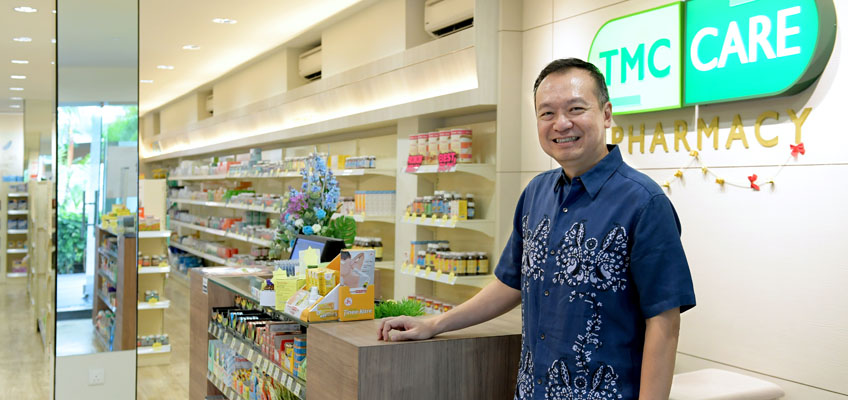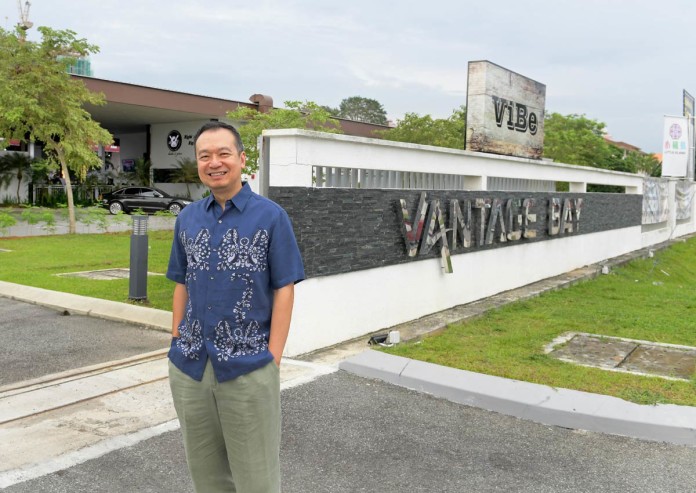Singapore private healthcare group Thomson Medical is building a general hospital in Johor Baru (JB) in hopes that the lower prices there will get Singaporeans to cross the Causeway for their medical treatment.
It is part of a mega healthcare hub that wants to take care of its patients from cradle to grave.
The project will also incorporate a school for would-be doctors and nurses from Singapore.
Getting Singaporeans to shuttle between the two cities is not new – already, they are living in nursing homes in JB.
Parkway Health’s 300-bed Gleneagles Medini hospital also opened there in December 2015.
But the endeavour by Thomson Medical is one of the most ambitious to date – at 11ha, the integrated project is a quarter the size of the Singapore General Hospital’s 43ha campus in Outram.
When fully completed in 10 years, it will have its own general and community hospitals, specialist centre and a medical school with research facilities.
It will also incorporate residences for the elderly such as those undergoing rehabilitation.
The site is located a five minutes’ drive from the Causeway.
Thomson Medical builds general hospital in Johor Baru
Source:
When The Straits Times visited this month, most of the land was boarded off but still empty.
What is already up is a retail pharmacy, which officially opened on Dec 10.
Thomson Medical chairman Roy Quek hopes the new facilities will help reduce the load on Singapore’s crowded hospitals and eventually add to the number of doctors and nurses familiar with the local healthcare landscape.
“I am basically trying to build a private sector version of the public healthcare clusters,” he told ST, referring to the groups that run Singapore’s various general hospitals, polyclinics, and other healthcare services.
“I think in the private sector we are able to move a bit faster, respond a bit more quickly. It is very hard for the public sector to handle this load on its own, but we can make it such that the load gets rebalanced,” added Mr Quek, who used to be deputy secretary of health policy at the Ministry of Health (MOH).
On why Thomson Medical did not build it here, he said it was due to limited land
Work will start on the main hospital, designed to house up to 500 beds, by next year. It is expected to be up and running by 2020, with the community hospital and medical school to follow.
CHEAPER
Singaporeans living in JB nursing homes
Source:
Treatment there will be “very competitively priced” compared with Singapore, said Mr Quek, citing how products sold at the pharmacy are on average about 30 per cent cheaper than in Singapore.
Singapore patients will be able to use their Medisave to fund their treatments if MOH gives the green light.
Healthcare adviser Jean-Luc Butel, president of consultancy firm K8 Global, said that while some people might be turned off by the shuttling back and forth across the Causeway, the new developments will appeal to those who are cost-conscious.
“The delivery system in Singapore is pretty much at capacity, and this (new project) could be a solution depending on the quality of care,” he said.
“A lot of people may be frustrated at issues they face in Singapore.”
The project is estimated to cost around $5 billion ringgit (S$1.6 billion), with the general hospital and adjoining medical centre costing around $1.3 billion ringgit.
The healthcare group is controlled by billionaire Peter Lim, who bought over the company in 2010.
Mr Quek also signed an agreement with well-known Irish medical school University College Dublin and is in talks with other universities to set up the medical school.
Its graduates will be mainly nurses and allied health professionals, although there will also be a handful of doctors, to meet Singapore’s most pressing needs.
Healthcare consultant Jeremy Lim noted that Singapore’s doctor- and nurse-to-population ratios stand at 2.3 and 7 per 1,000 people, which is lower than what is seen in most other developed countries.
“We continue to rely a lot on foreign-trained nurses,” said Dr Lim, who was hired by Thomson Medical as a consultant.
Where the medical school is concerned, however, the proof will be very much in the pudding.
“It takes years to build credibility, and by the time the first graduate comes out, it could be six or seven years,” Mr Butel said.
“Tying up with a big name is the first step, but you have to see the final product as well.”
linettel@sph.com.sg

This article was first published on December 27, 2016.
Get The New Paper for more stories.
Image:

Category:
Publication Date:
Tuesday, December 27, 2016 – 09:27
Keywords:
Send to mobile app:
Byline:
Source:
Rotator Headline:
Would you travel across the Causeway for more affordable healthcare?
Rotator Image:

Story Type:
Others






